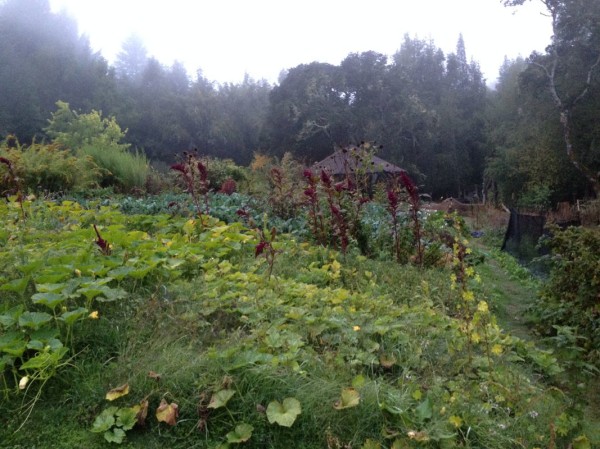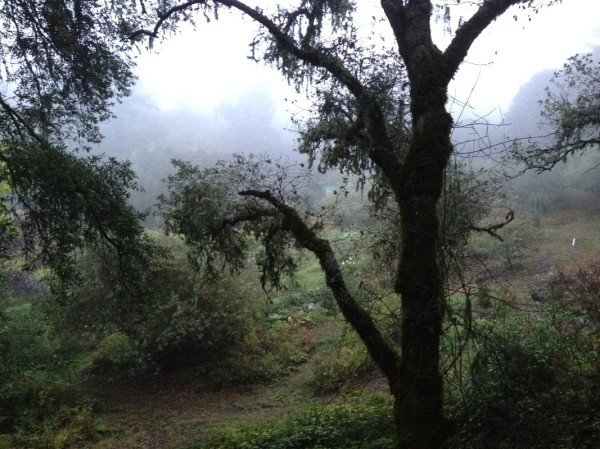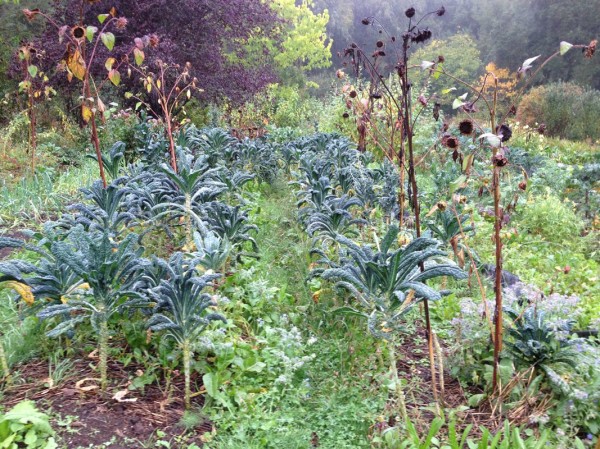Journal #3: Where to Begin?
by Miles Raymer
It depends.
In the wake of my two-week Permaculture Design Course at the Occidental Arts and Ecology Center (OAEC), these two words are burned into my brain. For me, they have come to represent the uncertainty and excitement that pervade the practice of environmentally responsible agriculture. Inside them resides the imperative that is fast becoming my new ambition: know your land. Everything depends on that––if I don’t know my land, how will I be able to figure out the best way to care for it? Further, what am I to do at the very beginning of this process, when my baseline knowledge of my land is so impoverished? Ask too many of these questions all at once, and I run headlong into the great killer of worthwhile endeavors: analysis paralysis.
Deep breath. If my time at OAEC taught me anything, it’s that nothing worthwhile comes instantly when you start playing by nature’s rules instead of imposing your own. But knowing that things will take time doesn’t always release me from that gnawing desire to do everything at once, or that unrealistic but persistent notion that if things aren’t done flawlessly, they might as well not be done at all. It’s an outlook that served me well in the cut and dry, assignment-based environment of academia, but is largely obstructive when it comes to bending one’s will to compose with the instruments of a natural environment. I’ve never considered myself to be someone who directs a lot of energy toward controlling the natural world, but I am beginning to see how just living in a modern American ecosystem requires each individual to do exactly that on a daily basis. This norms leads to a preponderance of environmental consequences: the stripping of water and nutrients from our planet’s soils, the degradation of long-established, biodiverse ecosystems, the occlusion of normal chemical cycles, and climate change, to name just a few. Looking over that short list, I realize that I knew about all of this long ago, but possessed neither the courage nor the impetus to put them together into the multifaceted, staggeringly threatening portrait of our aggregate destruction to Earth’s ecosystems. It’s not a pretty picture.
While we’re on the topic of things that are wrong with the world, I ought to take a moment of contrition to acknowledge the major flaw in the chosen title of my blog. The word “dirt” appears to be, well, something of a dirty word for many gardeners and farmers. It connotes disrespect toward soil, a tacit ignorance of the wondrous earthy layer that is the necessary substrate not only for humans, but for all terrestrial life forms. On this matter, I have to take my lumps and plead a victim to the requirements of language. Aurally speaking, “words&soil” simply doesn’t sound right. So I’m just going to apologize for my blog’s title and move on. Hopefully it won’t cause people who truly love soil to dismiss this project out of hand.
So, after dragging myself through this emotionally draining process of facing the planet’s problems while trying not to lose sight of ways to make small changes for the better, what am I left with? Lots of questions. Where should I put the compost pile? How many should I make? How big should they be? When should we start constructing the new raised beds for the garden extension? What design will we use? Which new fruit trees should we plant in the backyard? AAAHHH!
My neighbor Joe is the proud owner of a sprawling garden that is the envy of many a gardener and plant enthusiast in our neighborhood. He’s a clever old fellow, and he counseled me not to look at the whole yard all at once. “If you try to see the whole thing, you’ll just freeze,” he says. “So take it one thing at a time. Little by little, it all gets done.” These words aren’t exactly novel to me, but I find that I need to hear them again in this new context of trying to live with and through this piece of land that I’ve only ever lived on.
When I feel overwhelmed, I have to step back to remember that my most important mission in the next few years is simply to pay attention to my land. At OAEC, it all begins with PATO: Protracted And Thoughtful Observation. It’s a system for noticing patterns in nature and designing systems with these patterns in mind. It’s a principle that most humans never had to teach themselves, because it was woven into the fabric of their survival. But in a culture that has trained me to automatically match countless company logos to products incessantly marketed to consumers, I can only name a paltry handful of the plants growing outside my door. This needs to change, so I have ordered a book on basic botany and set a goal to spend the next year or two learning about as many of the plants on the property as I can identify. I will be a fun and arduous project, a treasure hunt as exciting as it is daunting. I am also hotly anticipating the fall’s first big rain, when I will tromp out into the wetness and take note of where and how water flows down the gradual slope from the road to our backyard, draining into the three acres of unmanaged wetlands toward the creek. These small activities are good places to start, but I still feel woozy when I think of how far I’ll need to go to gain even a basic competency. And countless little jobs still line the path ahead. Still, I’ll do my best to ignore the forest and focus on one tree at a time. For now.



Great insights from an information overloaded 2 weeks. Start small; start slow! Looking forward to hearing about the progression, on your land and in your vision.
Thanks for your comment, Jennifer. Hope you are doing well and that you’ll come back here and check on me from time to time. Take care!
Hey Miles! Great blog! I personally love the word dirt BTW- because, you know “god made dirt and dirt don’t hurt” plus it just tastes so darn good!
Just finished the two day keyline class with the Dohertys down at the grass-fed cattle farm in half moon bay- it was soooo foggy, but a really great group of farmers and a great class- was pleasantly surprised to see Jordan and Kendall there as well! Also got to meet some of my farmer neighbors and exchange contact and conversation.
big permie love to you, thanks for the writing!
I especially liked you neighbors advice!
Thanks for your thoughts, Sorrel! Sounds like you are well on your way to learning even more about permaculture. Good luck in your future endeavors, and I hope you’ll check here every now and then to see what I’m up to!
I feel so lucky to get to witness this process through your blog! I can’t wait to hear how the garden evolves and what you learn along the way.
As a side note, I really love the word “dirt.” And I’m now living in a culture with a different usage of the word: it corresponds more directly with “dirty.” So dust is dirt but soil is earth.
My words and dirt contribution for the day.
Thanks again, Miles. Good luck with the rain!
Thanks, Katie! I appreciate your support!